Project Honda Grom Wrap-Up

The quest for the perfect Honda Grom comes to an end
Our Project Honda Grom has put us through quite the whirlwind of emotions. If you’re not familiar with what I’m talking about, check out our Top 10 Honda Grom mods, build story, and especially our 24-hour race recap to get caught up. To take an incredibly long story and sum it up: our Honda Grom made great power (for a Grom anyway) but was plagued with atrocious handling. Simply put, it was one of the most frightening motorcycles we’ve ever ridden. The front end was unpredictable and far from confidence inspiring, though tedious tweaking from teammate and suspension guru Ed Sorbo helped make the bike rideable, at least.
Though we finished the race, the whole team left with a sour taste in our mouths, but I especially felt dejected at the fact zero testing time meant we finished nowhere near the top of the standings. The Grom project was supposed to end here, but I simply wouldn’t have felt right giving the Grom back to Honda with that feeling of defeat hanging over our heads. So after a little begging and pleading with Duke and bean-counter Alexander, I got the green light to bust our racing budget, right our Grom’s wrongs, and take it out for battle one last time with our friends at the United Mini Racing Association during the organization’s inaugural season finale at Adams Motorsports Park in Riverside, California. Why UMRA? Because it’s an organization for riders, by riders, with plenty of track time, and equally as important, stacked grids.
Interesting Discoveries
During our build-up for the 24-hour race we ran our Grom on the dyno. In our quest for reliable horsepower, we fitted a hi-flo oil pump to help feed more oil to the aftermarket oil cooler. And, per Brock’s Performance’s suggestion, we also added Petron Plus 4-Cycle Lube to help reduce friction within the engine. Being the astute and skeptical readers you are, some of you called us out for blindly adding a substance without independently verifying its claims. Meanwhile, Brock Davidson himself wondered how much power we were sacrificing with the hi-flo oil pump versus the stock unit. And so, with the 24-hour behind us, it was back to the dyno to answer these questions.
The test was simple. First, a dyno run would be made with the bike exactly as it was raced. Second, the oil would be drained and the hi-flo Takegawa oil pump swapped with the stock Honda unit, followed by a fresh topping of oil and another dyno pull. Lastly, the Petron Plus lubricant would be added and another dyno run made. From start to finish the process took three hours.
As the accompanying dyno chart shows, there’s one big surprise, but more on that in a moment. Our baseline run put down 9.04 hp and 7.03 lb-ft. As expected, power with the stock oil pump increased to 9.36 hp and 7.27 lb-ft of torque, a 3.5% increase in power and 3.4% jump in torque. After adding the additive, we got 9.28 hp and 7.31 lb-ft. A negligible difference. In the end, the jury is still out on the additive, but Brock was correct about the hi-flo pump robbing power. However, after viewing the dyno results, Davidson commented, “That is, hands down, the smallest reduction in power we have ever seen from the addition of an aftermarket pump or gear. It looks like a fantastic product!” It’s worth noting again that our goal wasn’t for maximum power, but reliable power to last a 24-hour race.
What proved more interesting was an observation from our dyno expert Chris Redpath of MotoGPWerks. After sticking his oxygen sensor in the pipe he noticed lean fueling. A closer look at the Power Commander mapping as delivered to us from Brock’s Performance showed slightly advanced timing, but overall lean mapping at full throttle.
For comparison, we then downloaded a map from Two Brothers Racing, straight off the Power Commander website, for a full exhaust and pod filter, and the result was more power throughout the rev range – to the tune of 9.89 hp and 7.59 lb-ft (a 5.7% bump in power and 4.4% gain in torque). The Two Bros. map adds more fuel than the Brock’s Performance map at basically all rpm, and Redpath felt it was still just a tiny bit lean at full throttle when looking at the 02 sensor results. Happy with these numbers, this would be the mapping used for the UMRA finale.
The Ed Sorbo Treatment
For those who don’t know, Ed Sorbo’s day job is running Lindemann Engineering, a noted motorcycle suspension tuning shop, so when it came to getting the Grom to handle the way it should, he was the obvious choice to help us make it happen. We had already determined the bike needed more trail and knew the JRi shock we were given was still longer than the stock unit we eventually raced with, even when placed in its lowest setting. So, with the blessings of JRi, Sorbo was let loose to shorten the shock.
More importantly, Sorbo straightened both fork tubes (that were bent in a crash when we took the stock Grom out for its first practice) in an attempt to install the K-Tech springs. Despite this, the springs still didn’t fit in the stanchions correctly, their outer diameter too large. As a result of our experience and those of other Grom customers, K-Tech is in the process of reproducing springs for its Grom fork kit with a smaller OD, but none were available to us by our deadline. Instead, Sorbo shortened the stock springs to achieve the correct spring rate, refilled the fork oil and fine-tuned the K-Tech clickers.
Not wanting to repeat our 24-hour race mistake of not testing before racing, Ed and I made the trip to Adams to test the revised setup ahead of the race weekend. And because Tom Roderick had been away during our 24-hour race riding the Honda RC213V-S, the lucky dog tagged along to get a taste of the other end of the Honda performance spectrum. Unfortunately, he wasn’t all that impressed, with complaints about a twitchy front end. Both Ed and I rode the bike after, claiming it was actually worlds better than it was during the 24-hour race (which spooked Tom even more), but it still didn’t inspire confidence for either of us. Ed noted we still needed more trail.
I had brought along the stock shock as a backup, not thinking we’d need to resort to it again, but after removing the shortened JRi we noticed it was still a tiny bit longer than the stocker. It was a minor difference, but it hurt our quest for more trail, so the stock shock went back on. The difference was noticeable, but not the solution we had hoped for. We had run out of ideas and time, so I decided I’d make the most of the bike I had for the weekend.
All For Naught
I had entered two classes for the race weekend: Grom and Formula 5. The former is self explanatory, while the latter is filled with a hodgepodge of different bikes ranging from Groms, Honda NSR50s, and Yamaha TTR125s. Both classes were showing nice turnouts, with no less than 12 Groms and 24(!) entries in F5. I didn’t have any illusions of grandeur considering our ill-handling machine, but a mid-pack finish was my goal.
With so many Groms in the paddock, curiosity got the better of me and I asked a fellow Gromer if they’d be interested in trading bikes so I could see how another race-prepped Grom handled. This one had an Ohlins fork kit instead of a K-Tech, and a JRi shock, and in fact was also tuned by Sorbo. By my third practice lap the difference was noticeable: it wasn’t nervous entering a corner, I could initiate a turn quicker, and the front was less vague through Adams’ high-speed sweeper. Marc Marquez levels of lean angle weren’t going to happen, but from a handling perspective it was a step above.
Unfortunately, disaster struck on the next lap. While approaching a hairpin turn dubbed “Little Monza,” yellow flags were waving frantically and corner workers were tending to a downed rider. As I passed the accident scene, MO’s Grom was laying on its side. Crap.
The story goes, two other riders dove to the inside in an attempt to pass, spooking our rider who then instinctively grabbed the brakes, which, because of the upgraded pads and brake line, was much stronger than the bike I was riding. The result was an endo of both bike and rider onlookers say would have impressed a stunt rider. The rider suffered bumps and bruises, but was otherwise fine, if not a little shaken. The bike, on the other hand, suffered mostly scrapes and a busted peg … and a shattered carbon fiber rear wheel. Game over.
Feeling for my plight, Rod Saito, who helps run UMRA and is the owner of the Grom I traded for, arranged for me to continue riding/racing his bike the rest of the day. I even brought home respectable finishes: fifth in the Grom race and seventh or so in F5 (third or fourth of the Groms entered. Don’t know for sure as electronic timing wasn’t available, it was all done by hand). But none of that really mattered, as the point was to race the MO Grom.
Though this project didn’t turn out the way we had hoped, this shouldn’t discourage other potential Grom enthusiasts out there. The Grom community is a close-knit group willing to help those looking for advice, and the MO example is the exception, not the rule, as there are some really fast Groms out there that handle quite well.
In the end, our quest to end this project on a high note never materialized. We made some big gains with the engine, but power is nothing without control. As the saying goes – that’s racing.

Troy's been riding motorcycles and writing about them since 2006, getting his start at Rider Magazine. From there, he moved to Sport Rider Magazine before finally landing at Motorcycle.com in 2011. A lifelong gearhead who didn't fully immerse himself in motorcycles until his teenage years, Troy's interests have always been in technology, performance, and going fast. Naturally, racing was the perfect avenue to combine all three. Troy has been racing nearly as long as he's been riding and has competed at the AMA national level. He's also won multiple club races throughout the country, culminating in a Utah Sport Bike Association championship in 2011. He has been invited as a guest instructor for the Yamaha Champions Riding School, and when he's not out riding, he's either wrenching on bikes or watching MotoGP.
More by Troy Siahaan



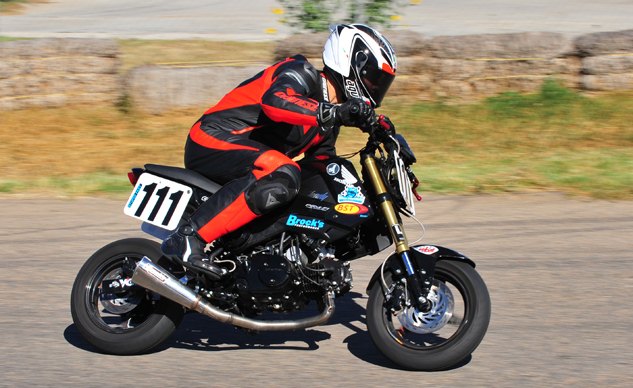
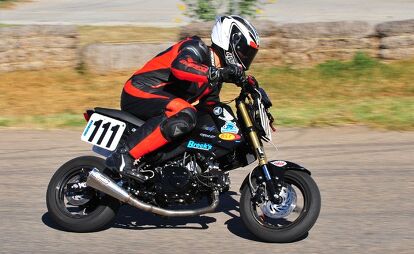
























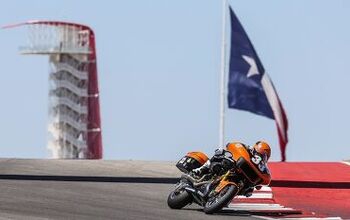


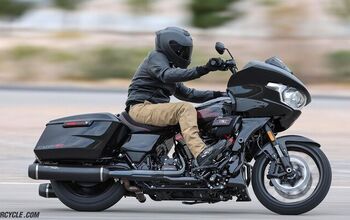












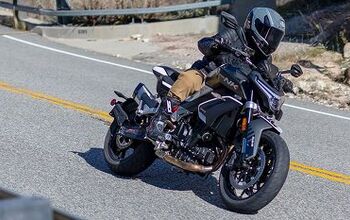
Comments
Join the conversation
Fun read! Amazing that such a tiny bike can be such a big challenge :)
It is amazing the difference fuel mapping can make. Different countries, and even different areas in the US, have different gas blends. Since you guys were obviously going all in on this, I bet some race or ethanol free 93 gas and the original map would work great and lend consistency to your tuning efforts.
It is easy to email and share maps and we even have a database of maps that I am the caretaker of over on the FZ1 board, and have run into the different gas issue. Euro or Aussie maps that work great over there with their 100% real fuel are too lean for US and it's crappy "corn gas" and US generated maps are pig rich over there.
We made it out to the M1GP 24hr race, but wish we would have made the UMRA one as well. Would have been a blast to race with some more Groms. We fitted ours with K-Tech cartridges and the rear shock. Did awesome for us with riders ranging from 150lbs to 260lbs. Found a happy medium and went for it.